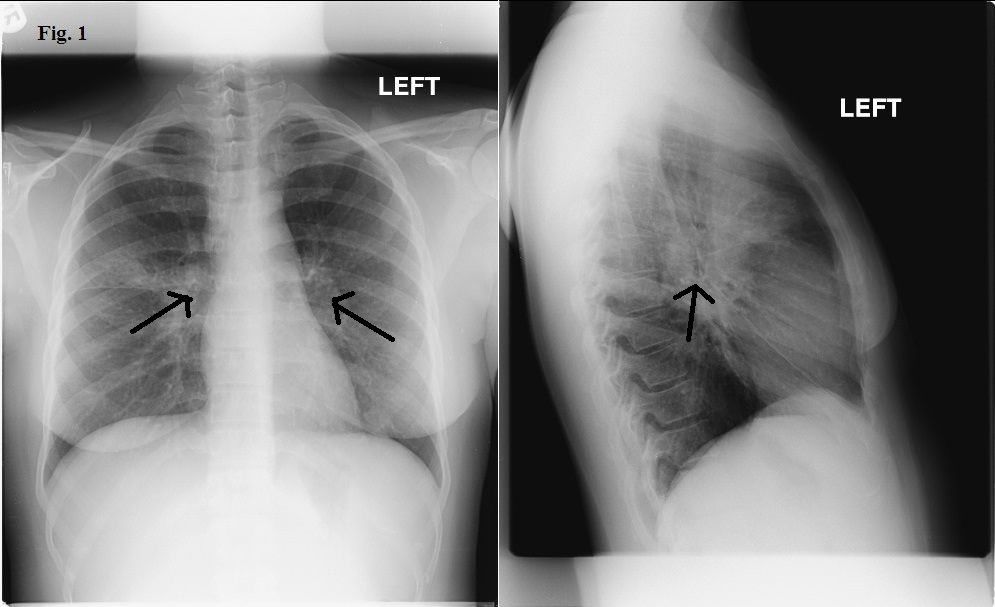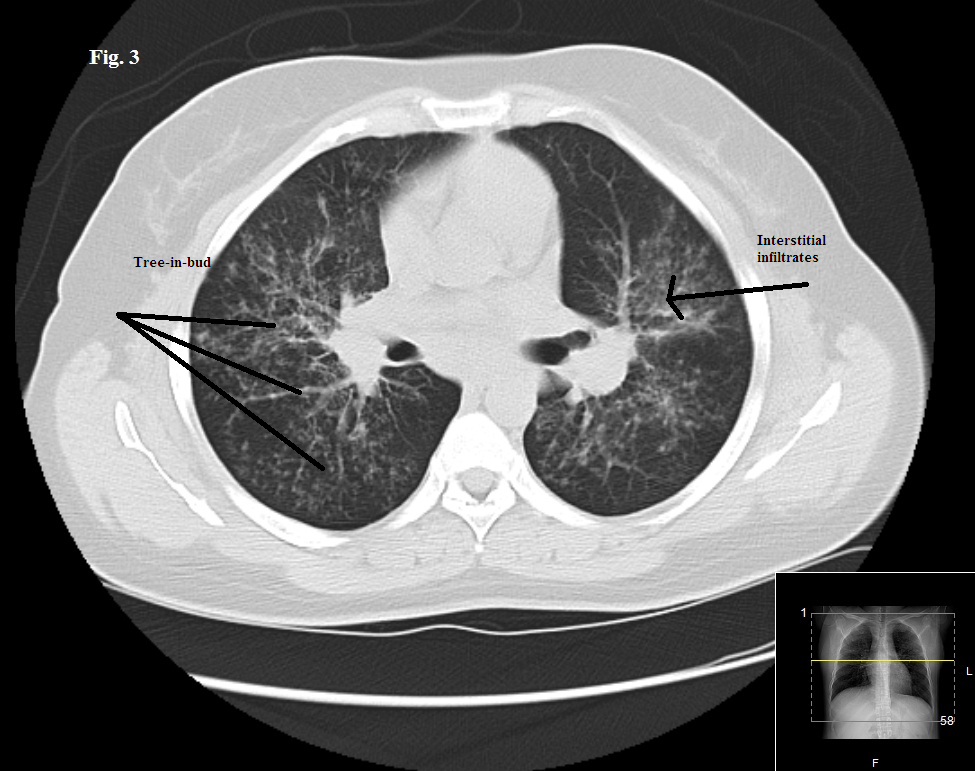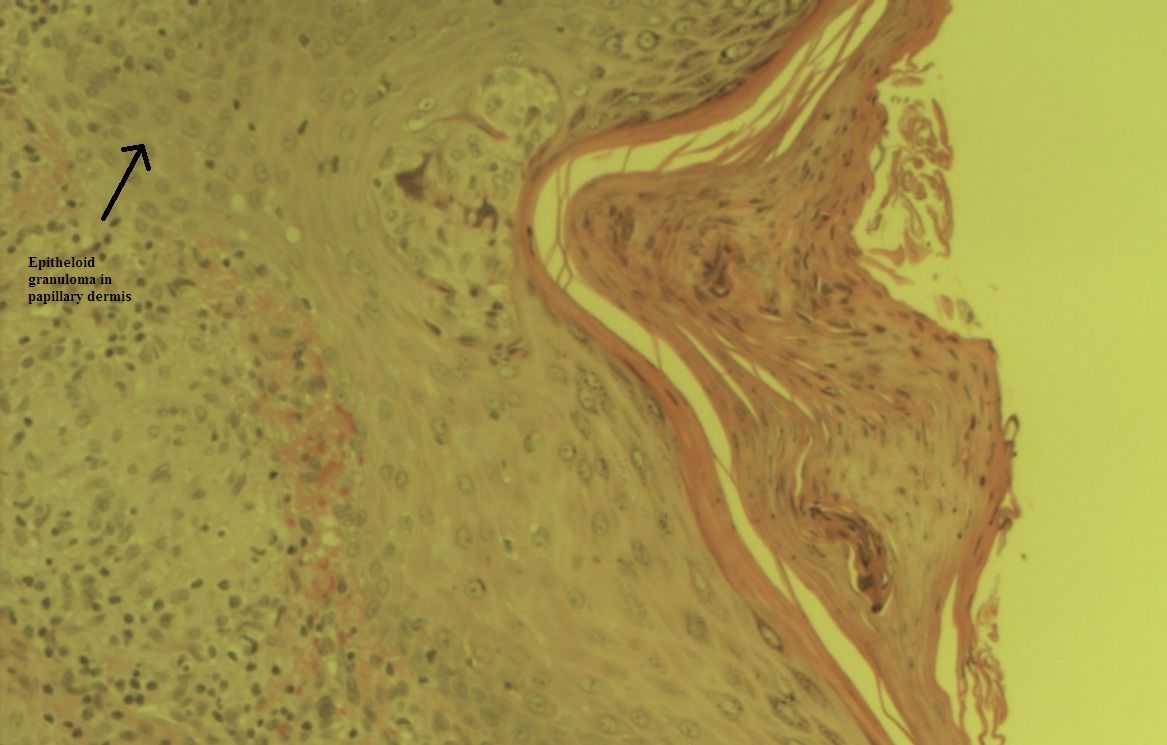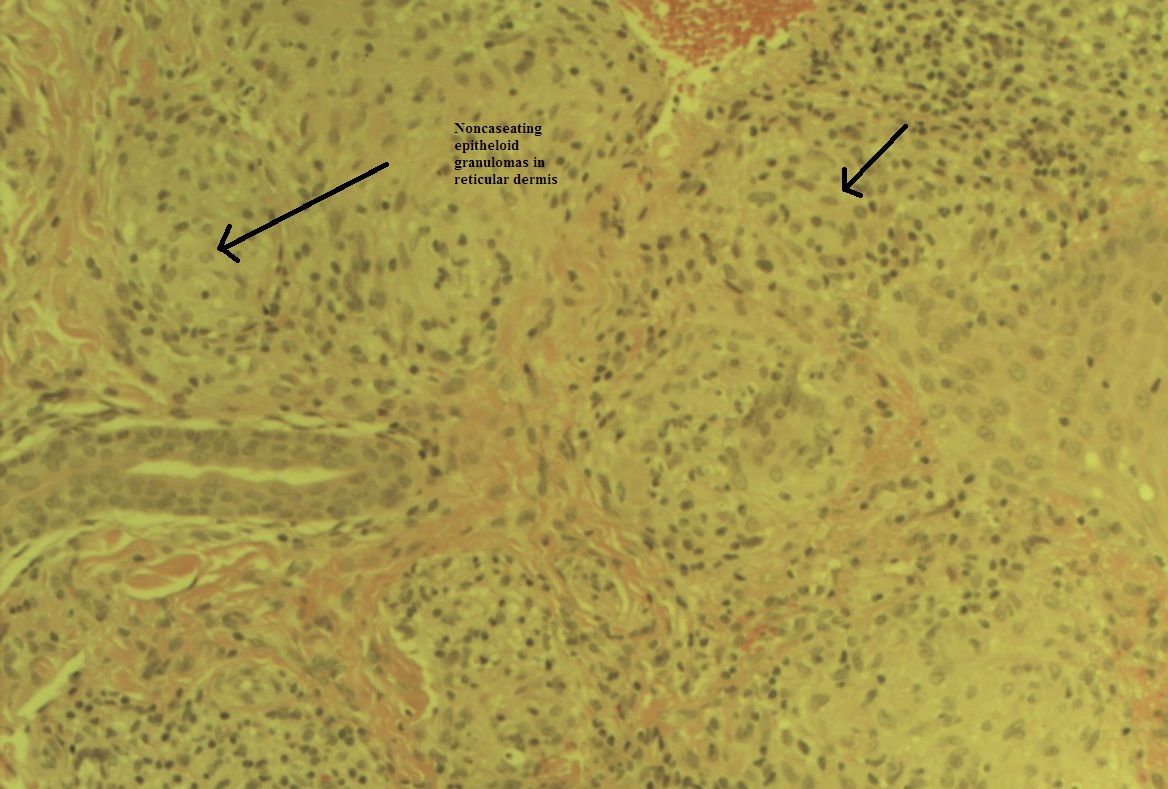- Clinical Technology
- Adult Immunization
- Hepatology
- Pediatric Immunization
- Screening
- Psychiatry
- Allergy
- Women's Health
- Cardiology
- Pediatrics
- Dermatology
- Endocrinology
- Pain Management
- Gastroenterology
- Infectious Disease
- Obesity Medicine
- Rheumatology
- Nephrology
- Neurology
- Pulmonology
Asthma or Something Else? That Is the Question
Worsening respiratory symptoms and fatigue of 6 months’ duration brought a 44-year-old woman in for evaluation. Diagnosed with asthma 2 years earlier, she was compliant with, but unresponsive to treatment. Your impressions?
Figure 1. Chest x-ray film 1 year before presentation

Figure 2. Repeated chest x-ray film.

Figure 3. CT scan of chest.

Figure 4a. Acid-fast bacilli test, negative.

Figure 4b. Gram stain, negative.

A 44-year-old African American woman was evaluated for symptoms of worsening cough, shortness of breath, chest tightness, and fatigue of 6 months’ duration. Bronchial asthma had been diagnosed 2 years earlier, and she had been compliant with her inhalation therapy (budesonide and formoterol). Her exercise tolerance had become reduced over the past 6 months.
The woman denied smoking, alcohol intake, and illicit drug abuse. She did not have any fever, weight loss, night sweats, or joint pain. She denied any allergies. Six months earlier, she had noticed the appearance of a progressive purple rash around both eyes. The rash responded poorly to topical hydrocortisone.
Physical examination revealed bilateral diffuse wheezing and crackles. Flesh-colored papules coalescing into plaques with some overlying scales were noted on the medial aspect of the patient’s orbits bilaterally, and they extended onto the nasal bone and upper eyelids. The rest of the examination findings were normal.
A chest radiograph obtained 1 year earlier was notable for mild hilar prominence (Figure 1). (Click on images to enlarge.) A repeated chest radiograph showed new bilateral diffuse interstitial infiltrates involving both lungs, along with bilateral hilar lymphadenopathy (Figure 2). A chest CT scan showed similar findings with a tree-in-bud appearance predominantly in the midlung zones and perihilar areas (Figure 3). Tree-in-bud appearance describes a CT finding of centrilobular opacities that correspond to luminal impaction of bronchioles that become focally dilated with fluid, pus or mucus. Also seen was bilateral axillary, hilar, precarinal, and subcarinal lymphadenopathy. Pulmonary function testing (PFT) results showed a progression from moderate to severe obstructive lung disease and worsening diffusing capacity of the lung for carbon monoxide (DLCO).
The patient’s ECG and echocardiogram results were unremarkable. Laboratory data were notable only for an elevated erythrocyte sedimentation rate of 60 mm/h (normal range, 0 to 20 mm/h). The rest of the workup-including complete blood cell count with differential; metabolic panel, with blood urea nitrogen, creatinine, glucose, electrolyte, and calcium levels; hepatic panel; antinuclear antibodies; rheumatoid factor; antineutrophil cytoplasmic antibodies; serum angiotensin converting enzyme levels; and urinalysis-was unremarkable. HIV and purified protein derivative test results were negative. Acid-fast bacilli test (Figure 4a) and Gram stain results (Figure 4b) were negative.
When skin biopsy findings from the rash around the patient’s eyes were considered in the context of chest images and PFT results, a diagnosis was made.
WHAT'S YOUR DIAGNOSIS?
Please leave your thoughts below.
For answer and discussion, CLICK HERE.
